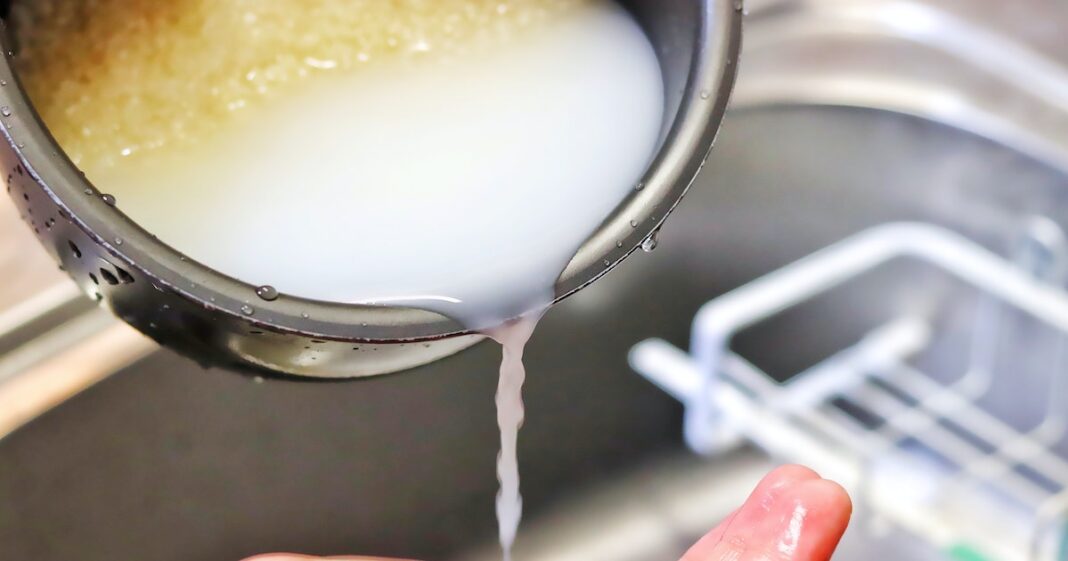Uh oh. Remember when you found out your dishwasher has a filter you’re supposed to be changing? Or that your Keurig needs to be cleaned way more than you’ve been doing it? Today will be another one of those days because, according to TikTok, you’re supposed to rinse your rice — more than once, no less — anytime you cook it. But should you wash your rice, really? Welp, as it turns out, the Tok knows what’s up.
According to many chefs, you should, in fact, adopt rice rinsing as part of your rice-cooking protocol. You already know that when you bake, it’s a science; when you cook, there’s always room for interpretation and reinvention. Still, there’s always something to learn when it comes to cooking. From finding new complementary flavors to exploring foods from different cultures, eating is a learning experience.
So, if you haven’t been rinsing or washing your rice, just chock it up to a lesson not yet learned. Then get ready for even better rice.
Why Rinse Rice?
One of the nice things about rice is it’s delicious with little effort. Washing it adds a step or two, but it’s definitely worth it. Like with many dry ingredients, when rice is moved and stored, it rubs against other grains. They wear down against each other, creating starchy dust. While that dust is still technically rice, it needs to come off. Cooking rice without rinsing the dust leads to clumpy rice because that dust gets wet, heats up, and acts like glue. Rinsing off that dust or starch helps separate the rice when it’s dry and when it’s wet and cooking.
As an added benefit, according to the FDA, a very trace amount of arsenic is found on rice, and washing your rice will help remove some of those particles. That means rinsing your rice will give it a better texture and help make it a little healthier.
Is Unwashed Rice Dangerous?
Will you die from unwashed rice? No. Will your food taste monumentally better if you wash your rice? You know what, maybe. However, washing rice is more about proper rice texture than flavor.
How To Wash Your Rice
There are many techniques for washing or rinsing rice, and as long as you aren’t using soap, there aren’t any wrong answers. It basically boils down to how many dishes you want to do and whether or not you want to touch wet rice. In all methods, the trick is to continue washing until the water runs clear or close to clear.
Chef Ken Lee took to TikTok to show how he washes rice only using one pot — the one you cook in.
Chef Lee says a strainer and multiple rinses aren’t necessary if you just plunge your hands in the water and agitate the rice grains. Filling one pot with plenty of water and getting your hands down in it to move through the rice to create water circulation and aggressively “scrubbing” with your fingers typically means you only need one good rinse. After that, a careful pour should mean you don’t even need to dirty a strainer.
Fewer dishes? Always a win.
Other Methods
Many people can’t deal with the sensation of touching rice, wet or dry, and that’s OK, too. There are other rice-washing methods.
You could try using a little less water and perhaps a spatula to circulate the water, then gently pour out the water and repeat. After two to three water changes, it should run clear enough. If you have a very fine mesh strainer, you could also use that. Either rinse the rice in your pot and dump it into the strainer to get out the water or just start with your dry rice in a strainer and let the water run through it.
A note, though: Many people believe rinsing using a strainer is the least effective method, as it doesn’t allow you to fully understand if all of your rice was rinsed well or not.
Even More Rice Tips
After you wash your rice, you could go straight to cooking it in your rice cooker or simply follow the package instructions. Your rice will be adequately cooked and should taste good. But you’ve come this far… might as well go for rice glory. Many “experts” and chefs suggest a few other tips to remember when cooking rice:
- Soak it. This helps the rice begin to absorb water before you actually cook it and will help it be more tender. How long you soak depends on the type of rice.
- Use the right amount of water. There is a lot of debate about how much water to use for rice. Most rice packages suggest a 2:1 ratio, so one cup of rice gets two cups of water. Others prefer “the knuckle method,” where you put your middle fingertip against the top of the rice in the pot, then fill it with water until it reaches your first knuckle line. As with soaking, the type of rice you use can sway how much water you use.
- Flavor it. For basic varieties like white or brown rice, add a bit of salt to the water. If you’re cooking ethnic food, it never hurts to look up recipes from the variety of rice traditionally used in that cuisine or get creative with the region’s flavors.
- Leave it alone! Unless you’re frying cooked rice, you need to leave your rice alone while it cooks.
There you have it — rinse and repeat doesn’t only apply when you’re washing your hair.


